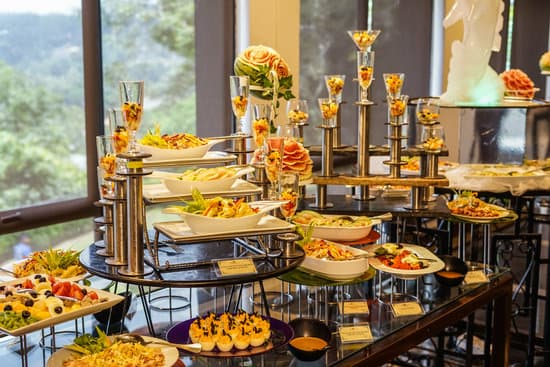What finger do you put the wedding ring on? The history of the wedding ring dates back thousands of years and has evolved over time. From its significance in different cultures to the traditional etiquette surrounding it, the wedding ring holds a special place in the institution of marriage. This article explores the history, cultural traditions, and significance of the wedding ring, as well as modern alternatives and future trends in the industry.
The history of the wedding ring is rooted in ancient Egyptian and Roman customs, where rings were exchanged as a symbol of eternal love and commitment. Over time, the tradition spread to other cultures and evolved into what we know today. Understanding the origins of this tradition can provide insight into its importance and meaning in our modern society.
Beyond its historical roots, the wedding ring holds significant symbolism in various cultures around the world. Different traditions and customs dictate how the wedding ring is worn, exchanged, and valued within a marriage. Exploring these cultural differences can shed light on the diverse meanings attached to this timeless symbol of love and partnership.
In addition to exploring the history and significance of the wedding ring, this article will delve into traditional etiquette surrounding its placement on a specific finger. Understanding these customs can help couples navigate their own wedding ring choices with respect for tradition while also considering modern alternatives that may better suit their individual preferences.
The Significance of the Wedding Ring
In many cultures, the wedding ring is seen as a symbol of eternal love and unity. The circular shape of the ring is said to represent never-ending love, with no beginning or end. This symbolizes the eternal bond between married couples. Additionally, the placement of the wedding ring on the finger is significant as it is believed that there is a direct vein that connects this finger to the heart-the “vena amoris” or “vein of love”.
Different cultural traditions have their own unique significance when it comes to wedding rings. In some cultures, such as in Jewish tradition, a simple plain band without any stones or engravings is preferred as it represents purity and simplicity. In other cultures, such as in Indian weddings, both the bride and groom may receive matching sets of bangles alongside their wedding rings to signify their union.
Ultimately, no matter what finger you put the wedding ring on or which cultural traditions you follow, the significance remains constant-a symbol of love and commitment that transcends time and culture.
Different Cultural Traditions
The tradition of wearing a wedding ring dates back to ancient Egypt, where it was believed that the circular shape represented eternity and the hole in the center symbolized a gateway or door leading to both the future and unknown. This practice eventually spread to other cultures and has been an enduring symbol of marriage for centuries. However, different cultures have their own unique traditions and beliefs surrounding the wedding ring.
In Western cultures, the wedding ring is typically worn on the fourth finger of the left hand, known as the “ring finger.” This tradition can be traced back to the ancient Romans who believed that this finger had a vein that was directly connected to the heart, which they called the “vena amoris” or “vein of love.” This symbolism has persisted through the centuries and is still widely recognized today.
In some Eastern European and South American countries, however, it is more common to wear the wedding ring on the right hand. For example, in Russia and Poland, couples traditionally wear their wedding rings on their right hand before moving them to their left hand after their wedding ceremony. In India, each region has its own customs regarding which hand and finger to wear a wedding ring on.
Ultimately, while there are cultural differences in where individuals wear their wedding rings, what matters most is what feels meaningful and significant for each couple. Whether it’s based on cultural traditions or personal preference, the act of exchanging rings serves as a universal symbol of love and commitment.
| Cultural Tradition | Wedding Ring Finger |
|---|---|
| Western Cultures | Left Hand – Fourth Finger |
| Eastern Europe & South America | Right Hand – Varies by Country |
| India | Varies by Region – Can be Right or Left Hand |
The Correct Finger for the Wedding Ring
The tradition of wearing a wedding ring dates back thousands of years. In ancient Egypt, the circle was a symbol of eternity, and so the wedding ring was worn on the fourth finger of the left hand because it was believed that a vein from this finger led directly to the heart. This tradition has been passed down through generations and is still widely followed today.
Different Cultural Beliefs
In some cultures, such as in India, the wedding ring is worn on the right hand instead of the left. Additionally, in some European countries like Germany and Russia, the engagement ring is worn on the left hand, but then moved to the right hand during the wedding ceremony. Understanding these cultural beliefs can help individuals respect and appreciate diverse traditions when it comes to wearing wedding rings.
The Symbolism Behind Finger Placement
The placement of the wedding ring on the fourth finger, also known as the “ring finger,” carries deep symbolism in many cultures. This finger represents love and commitment due to its connection with the heart. For many couples, this traditional understanding of wearing a wedding ring represents their eternal bond and commitment to each other.
Traditional Wedding Ring Etiquette
When it comes to traditional wedding ring etiquette, there are certain customs and practices that have been followed for centuries. These customs often vary by culture and religion, but they all share the common purpose of symbolizing the bond between two people.
In many Western cultures, the wedding ring is worn on the fourth finger of the left hand, known as the “ring finger.” This tradition dates back to ancient times when it was believed that this finger contained a vein that led directly to the heart, symbolizing love and commitment.
Exchanging of Rings
During a traditional wedding ceremony, the exchange of rings is a significant ritual that symbolizes the couple’s commitment to each other. The groom usually places the bride’s wedding ring on her finger first, followed by the bride placing the groom’s ring on his finger. This act represents their mutual love and devotion to one another.
Wearing of Engagement Ring
In some cultures, it is customary for individuals to wear both an engagement ring and a wedding ring on the same finger after marriage. The engagement ring typically goes on first, followed by the wedding band. However, in other cultures, especially in Eastern countries like India and Bangladesh, it is more common for the bride to receive a set of rings during her engagement that she wears on different fingers or hands.
Modern Alternatives to the Wedding Ring
In today’s modern world, there are many alternatives to the traditional wedding ring that couples can consider. While the classic gold or platinum band is still a popular choice, many individuals are opting for more unique and unconventional options to symbolize their commitment to one another. Here are some modern alternatives to the traditional wedding ring:
- Tattoo Rings: Some couples choose to get matching tattoos on their ring fingers as a permanent symbol of their love and devotion. This unique alternative is gaining popularity among those who prefer a more personal and intimate expression of their commitment.
- Silicone Rings: For individuals with active lifestyles or who work in professions where wearing a metal ring is not practical or safe, silicone rings offer a comfortable and durable alternative. These rings come in a variety of colors and styles, making them a trendy choice for modern couples.
- Customized Bands: Many couples are opting for customized wedding bands that reflect their personal style and interests. From incorporating meaningful symbols or engravings to choosing unconventional materials such as wood or meteorite, personalized rings are becoming increasingly popular.
As society becomes more inclusive and diverse, some couples are exploring non-traditional options such as mismatched or non-gender-specific wedding rings. Ultimately, the decision of which ring alternative to choose comes down to personal preference and what best represents the unique bond between two individuals.
In addition to these modern options, some couples are choosing not to exchange physical rings at all, instead opting for symbolic gestures such as planting trees together or creating art that represents their commitment. As attitudes toward marriage continue to evolve, so too do the ways in which couples express their love and devotion.
How to Choose the Perfect Wedding Ring
When it comes to choosing the perfect wedding ring, there are several factors to consider. First and foremost, it’s important to take into account your personal style and preferences. Some people prefer traditional gold or silver bands, while others may opt for a more modern design with intricate details or even colorful gemstones. It’s also crucial to consider durability and comfort – after all, this is a piece of jewelry that you will be wearing every day.
Another important aspect to consider when choosing the perfect wedding ring is its compatibility with your engagement ring. If you already have an engagement ring, you’ll want to choose a wedding band that complements it in terms of metal color, design, and overall aesthetic. Some couples opt for matching sets that are designed to be worn together, while others prefer mix-and-match styles that reflect their individual personalities.
Lastly, budget is a significant factor when choosing the perfect wedding ring. Wedding rings come in a wide range of prices depending on factors such as metal type, design complexity, and the presence of gemstones. It’s essential to set a budget before starting your search and stick to it as much as possible to ensure that you find the perfect ring without breaking the bank.
| Wedding Ring Factors | Description |
|---|---|
| Personal Style | Consider your style and preferences when choosing a wedding ring. |
| Compatibility with Engagement Ring | Ensure that the wedding band complements the engagement ring if you have one. |
| Budget | Set a budget before starting your search for the perfect wedding ring. |
How to Care for Your Wedding Ring
After exchanging vows and slipping on that wedding ring, it is essential to know how to take care of this symbol of love and commitment. Wedding rings are not just beautiful pieces of jewelry, but they also hold sentimental value for couples. Therefore, knowing the proper ways to care for them is crucial in maintaining their beauty and significance.
One of the most important things to remember when caring for your wedding ring is to keep it clean. Over time, dirt, lotions, and oils from your skin can build up on the ring, dulling its shine.
To clean your wedding ring, you can use a mild soap and warm water or a specialized jewelry cleaning solution. Gently scrub the ring with a soft brush to remove any grime, then rinse it thoroughly and dry it with a lint-free cloth.
In addition to regular cleaning, it is also important to have your wedding ring professionally inspected and cleaned at least once a year. This ensures that any loose stones are tightened, and any potential damage is caught early on. Proper storage is another essential aspect of caring for your wedding ring.
When you’re not wearing it, store the ring in a jewelry box or pouch to prevent scratches or damage. By following these simple steps, you can ensure that your wedding ring remains as beautiful as the day you first received it.
By taking good care of their wedding rings, couples can preserve not only the physical beauty of the rings but also their sentimental value. A well-cared-for wedding ring will continue to serve as a lasting symbol of love and commitment for years to come.
The Future of the Wedding Ring Industry
In conclusion, the wedding ring has a rich history and holds significant cultural and personal significance for couples around the world. From its origins in ancient civilizations to the modern-day symbol of love and commitment, the wedding ring continues to be an essential part of marriage traditions. While different cultures have their own traditions regarding wedding rings, the universal symbolism of love, unity, and commitment remains constant.
As we look to the future of the wedding ring industry, it’s clear that there will always be a demand for these timeless symbols of love. However, modern alternatives to traditional wedding rings are emerging as couples seek unique and personalized options to reflect their individual styles and values. From custom-designed rings to non-traditional materials such as wood or titanium, the industry is evolving to meet the diverse preferences of today’s couples.
In the end, whether you choose a classic gold band or an unconventional alternative, what matters most is the meaning behind the ring. As you select the perfect wedding ring for your special day, remember that it is a symbol of your love and commitment that will endure for a lifetime. The finger you put your wedding ring on may vary depending on cultural tradition or personal preference, but its significance remains unchanged.
Frequently Asked Questions
Are Wedding Rings on Left or Right Hand?
Wedding rings are traditionally worn on the left hand, specifically on the fourth finger, also known as the “ring finger.” This custom is widely observed in many Western countries, including the United States.
What Is the Rule for the Wedding Ring Finger?
The tradition of wearing a wedding ring on the fourth finger of the left hand dates back to ancient times when it was believed that this finger had a vein that led directly to the heart. This symbolic gesture represented the connection and love between two people in marriage.
Why Would a Man Wear His Wedding Ring on His Right Hand?
In some cultures, it is customary for men to wear their wedding ring on their right hand instead of the left. This practice can vary depending on religious or cultural traditions, personal preference, or even simply because of individual comfort or practical reasons.
Regardless of which hand it is worn on, the meaning and sentiment behind wearing a wedding ring remains the same – a symbol of love and commitment in marriage.

I have been involved in marriages for over 20 years helping couples and singles understand more about them.





